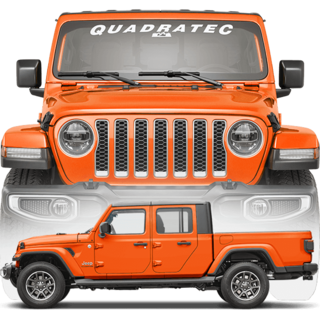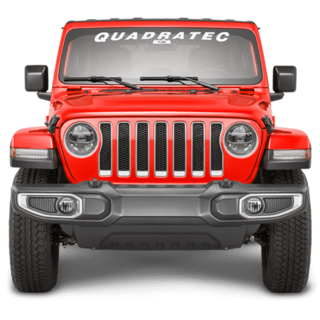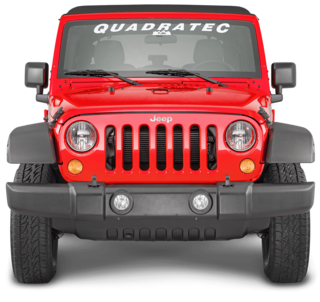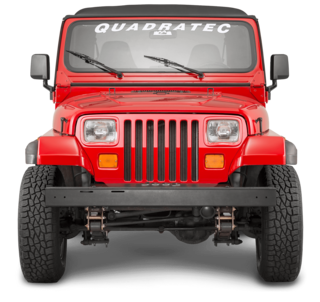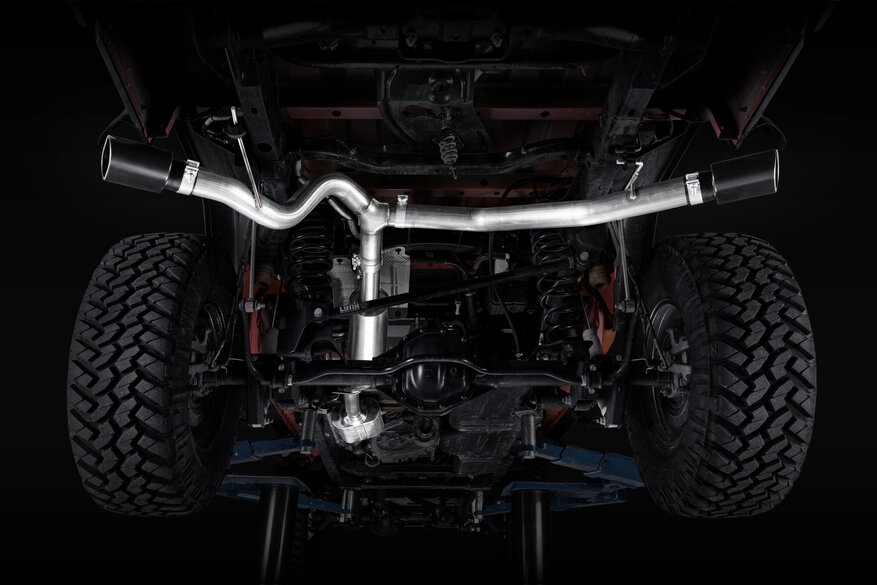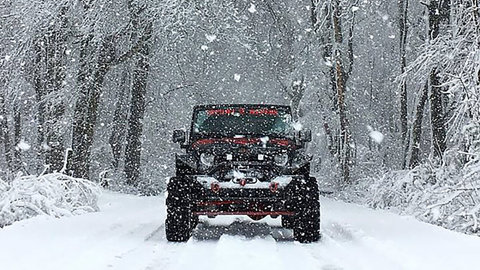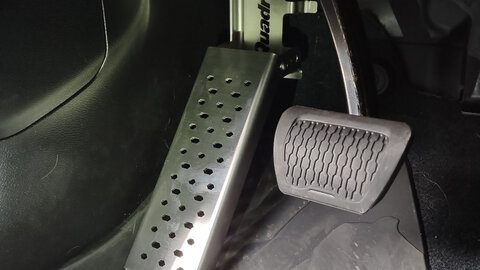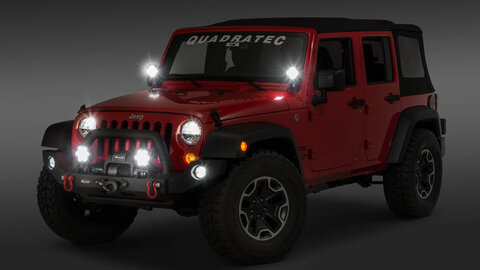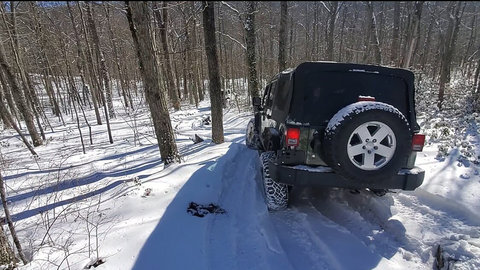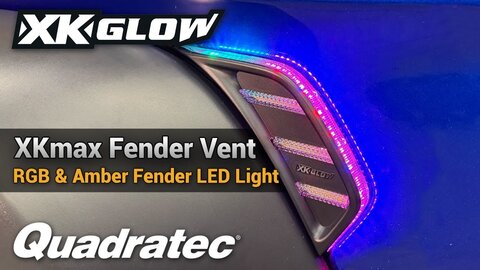by Matt Konkle
Managing Editor
Modifications make up the lifeblood of nearly all Jeep enthusiasts. And when it comes to those modifications, there should be some tangible results, right? Something noticeable to justify the expense and time spent changing things around.
Some of those things can be pretty easy to notice. Like swapping over to a new soft top to replace a torn, ripped and sagging cover. Or, adding a winch to the front bumper to help in recovery situations.
Some may not be so obvious.
Like an aftermarket exhaust for your Jeep.
After all, the factory one works well for the most part. But maybe it’s the idea of a deeper growl from that exhaust. Maybe you’re looking for better performance on the trail or highway. Or perhaps you just want something that looks as serious as other things you’ve done to your build.
In reality, an aftermarket exhaust offers several advantages beyond what the factory version presents. An aftermarket exhaust usually features better materials and wider piping that translates into horsepower and torque gains, as well as an enhanced throttle response.
But before you dive into all the different aftermarket exhausts, it’s smart to get the facts straight.
Here are some of the top Jeep exhaust questions we hear all the time — with real, no-nonsense answers to help you make the right exhaust decision.
Why Should I Upgrade My Jeep’s Exhaust System?
Answer: Year after year, this is the top question everyone asks. Most people know a Jeep’s factory exhaust works just fine for everyday driving — but let’s be honest, it’s built for mass production and quiet comfort, not performance.
Upgrading to an aftermarket kit gets you a better exhaust note — a deeper, throatier growl that matches the brand’s rugged image. It also provides improved performance because aftermarket systems can help your engine breathe better, boosting horsepower and torque.
More efficient airflow results in better efficiency, and can mean better throttle response as well as, in some cases, slight fuel economy gains.
Additionally, these aftermarket kits utilize stronger materials like stainless steel or anodized aluminum, so they are better protected against corrosion.
What’s the Difference Between Axle-Back and Cat-Back Exhaust Systems?
Answer: Well, think of it like this — Axle-Back Systems replace the exhaust from the rear axle to the tip. These normally give you better sound and looks without messing with emissions equipment. If you want a noticeable upgrade without a full system swap, this is the kit for you.
Conversely, Cat-Back Systems replace everything from the catalytic converter back to the tip. These typically offer bigger performance gains because they replace more restrictive factory piping. Anyone looking for power gains and an aggressive tone should think about upgrading to a cat-back system.
Quick Tip: An axle-back exhaust is cheaper and easier to install, while a cat-back system provides more performance, but it’s a bit more involved to get on the vehicle.
Will an Aftermarket Exhaust Make My Jeep Too Loud?
Answer: Not necessarily — unless you want it to be, as different kits offer different sound levels. Some have a moderate tone that is slightly throatier than the factory exhaust, but won’t make your neighbors hate you. Others feature a more aggressive sound that is loud, husky and in-your-face. Finally, some kits are resonated systems that use additional chambers to smooth out and tone down the sound without killing performance.
What Materials Should I Look For?
Answer: One of the best things about an aftermarket exhaust system is its construction. Material matters if you want an exhaust that can take some abuse.
Aluminized steel kits are usually more affordable and corrosion-resistant, but not as tough long-term as other aftermarket exhausts.
These days, many exhaust kits utilize 409 Stainless Steel, which is more durable and rust-resistant — perfect for just about any climate out there.
At the top end are exhaust systems using 304 Stainless Steel. This material is top-shelf stuff and is highly corrosion-resistant, displays a nice shine, and has no issue shrugging off harsh weather or all road and trail grime.
Quick Tip: If you’re keeping your Jeep long-term or plan to off-road in tough conditions, look for 409 or 304 stainless. It’s worth it.
Can I Install a New Exhaust System Myself?
Answer: If you know your way around simple shop tools, you’re in good shape.
Most axle-back and cat-back systems are bolt-on applications — meaning no welding, cutting, or complicated tools involved. For most installations, you’ll want to have jack stands to get the vehicle off the ground and provide easier undercarriage access, basic hand tools like ratchets, sockets, extensions, and penetrating oil. That oil is excellent for older vehicles that may have stubborn factory bolts.
Make sure to set aside an afternoon for the installation and remember, if things get difficult, a local shop can usually do the install for a couple hundred bucks.
Will an Exhaust Upgrade Affect My Warranty?
Answer: Generally, no — at least not legally.
Thanks to the Magnuson-Moss Warranty Act, dealerships can’t void your warranty just because you swapped your exhaust. They have to prove the aftermarket part caused the problem.
Will I Get Better Fuel Efficiency with a New Exhaust?
Answer: As we said before, most aftermarket exhaust systems should increase fuel economy simply because of their construction.
A less restrictive exhaust can improve engine efficiency, which might mean small fuel economy gains — especially on the highway. But all of this comes with a caveat: it is a Jeep, not a Prius. Most people look to upgrade for sound and performance first, fuel efficiency second.
Single vs. Dual Exhaust: What’s Better for My Jeep?
Answer: It all depends on what you want out of your kit.
A Single Exhaust is lighter, simpler, cheaper, while still providing you a nice sound and performance bump.
Dual Exhaust kits look more aggressive and can give a little more flow, but they are heavier and sometimes may be overkill for your needs unless your vehicle is heavily modded.
Quick Tip: For most, a well-made single exhaust does the job perfectly. Duals are great for those chasing a little extra style (and noise).
Will a New Exhaust Help Off-Road Performance?
Answer:Absolutely.
Better throttle response means better control at low speeds — a must when you’re crawling rocks or navigating tricky climbs. Plus, high-clearance exhaust setups can tuck pipes up and out of harm’s way, reducing the chance you’ll bash something important on a trail.
Will an Aftermarket Exhaust Change How My Jeep Passes Inspection?
Answer: Not if you choose the right system.
Most aftermarket exhaust kits are 50-state legal and do not mess with emissions equipment like catalytic converters. So, stick to cat-back or axle-back systems and you should have no worries when it comes time for inspection.
Quick Tip: If you remove or tamper with catalytic converters or O2 sensors, that’s when you’ll run into inspection and legal trouble.
Can I Pair My Exhaust Upgrade with Other Mods?
Answer: Definitely — and you should.
Exhaust upgrades pair perfectly with parts like Cold Air Intakes, Tuning Chips (to reprogram for max efficiency and performance gains), or Headers (for more serious power increases).
Quick Comparison: Axle-Back vs. Cat-Back Exhaust Systems
| Type | Coverage | Key Benefits | Best For |
|---|---|---|---|
| Axle-Back | Rear axle to exhaust tip | Easier install, budget-friendly, better sound | Jeepers wanting sound upgrade without a full swap |
| Cat-Back | Catalytic converter to exhaust tip | More power gains, improved throttle response, better airflow | Drivers chasing performance and sound |
| Install Difficulty | Easy (bolt-on) | DIY-friendly with basic tools | DIY enthusiasts |
| Sound Impact | Moderate boost | Noticeable improvement | Trail and city drivers |
| Performance Boost | Moderate | Higher | Off-roaders, highway drivers looking for extra muscle |
Related Articles:
Top Jeep Articles
- December 12, 2025
- 9 min read
- December 11, 2025
- 4 min read
- December 11, 2025
- 4 min read
- December 10, 2025
- 7 min read
- December 9, 2025
- 8 min read
- December 8, 2025
- 12 min read
- December 5, 2025
- 4 min read
- December 4, 2025
- 10 min read

